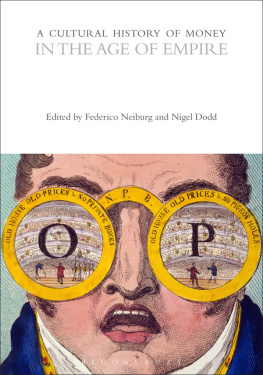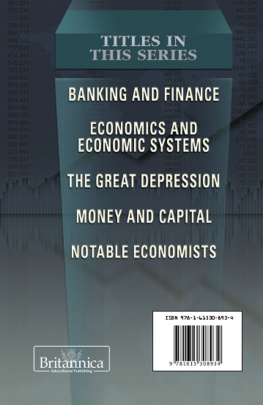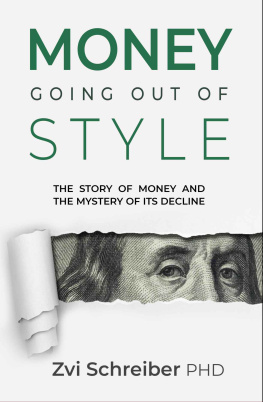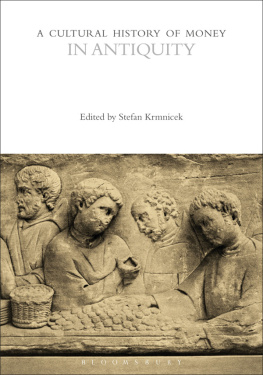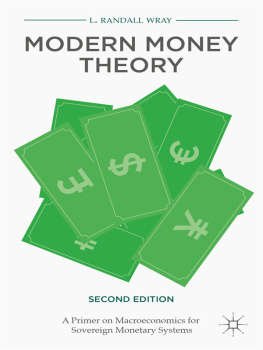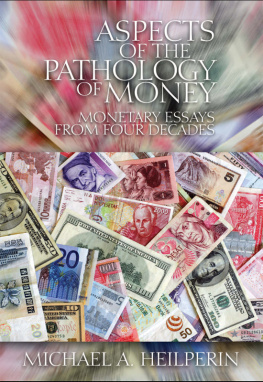A CULTURAL HISTORY
OF MONEY
VOLUME 5
A Cultural History of Money
General Editor: Bill Maurer
Volume 1
A Cultural History of Money in Antiquity
Edited by Stefan Krmnicek
Volume 2
A Cultural History of Money in the Medieval Age
Edited by Rory Naismith
Volume 3
A Cultural History of Money in the Renaissance
Edited by Stephen Deng
Volume 4
A Cultural History of Money in the Age of Enlightenment
Edited by Christine Desan
Volume 5
A Cultural History of Money in the Age of Empire
Edited by Federico Neiburg and Nigel Dodd
Volume 6
A Cultural History of Money in the Modern Age
Edited by Taylor C. Nelms and David Pedersen
A CULTURAL HISTORY
OF MONEY
IN THE AGE OF
EMPIRE
Edited by Federico Neiburg and Nigel Dodd

BLOOMSBURY ACADEMIC
Bloomsbury Publishing Plc
50 Bedford Square, London, WC1B 3DP, UK
1385 Broadway, New York, NY 10018, USA
BLOOMSBURY, BLOOMSBURY ACADEMIC and the Diana logo are trademarks of Bloomsbury Publishing Plc
First published in Great Britain 2019
Copyright Bloomsbury Publishing, 2019
Federico Neiburg and Nigel Dodd have asserted their right under the Copyright, Designs and Patents Act, 1988, to be identified as Editors of this work.
For legal purposes the Acknowledgments on pp. 13 and 71 constitute an extension of this copyright page.
Series design: Raven Design
Cover image: The OP Spectacles, pub. 1809 (hand coloured etching), Cruikshank, George (17921878) ( Private Collection/The Stapleton Collection/Bridgeman Images)
All rights reserved. No part of this publication may be reproduced or transmitted in any form or by any means, electronic or mechanical, including photocopying, recording, or any information storage or retrieval system, without prior permission in writing from the publishers.
Bloomsbury Publishing Plc does not have any control over, or responsibility for, any third-party websites referred to or in this book. All internet addresses given in this book were correct at the time of going to press. The author and publisher regret any inconvenience caused if addresses have changed or sites have ceased to exist, but can accept no responsibility for any such changes.
A catalogue record for this book is available from the British Library.
A catalog record for this book is available from the Library of Congress.
ISBN:Pack:978-1-4742-3739-0
HB:978-1-4742-3740-6
Series: The Cultural Histories Series
Typeset by RefineCatch Limited, Bungay, Suffolk
Printed and bound in Great Britain
To find out more about our authors and books visit www.bloomsbury.com and sign up for our newsletters.
Contents
Federico Neiburg and Nigel Dodd
Juan Pablo Pardo-Guerra
G. Balachandran
Bill Maurer
Michael OMalley
Nicky Marsh
Leopoldo Waizbort
Nigel Dodd
Chapter 1
Chapter 3
Chapter 4
Chapter 5
G. Balachandran teaches at the Graduate Institute of International and Development Studies, Geneva. His research engages South Asia and the Indian Ocean in a global frame spanning labor, capital, and entrepreneurship. His books include John Bullions Empire: British Gold Problems and India between the Wars (1996, 2013, 2015) and Globalizing Labour? Indian Seafarers and World Shipping, c. 18701945 (2012).
Nigel Dodd is a Professor of Sociology at the London School of Economics. His latest book, The Social Life of Money, was published by Princeton University Press in 2014.
Nicky Marsh is Professor of Twentieth Century Literary Studies at the University of Southampton. She works on literary and cultural representations of money and financial markets. She is the author of Money, Speculation and Finance in Contemporary British Fiction and co-editor of Show Me the Money: The Visual Image of Finance and Literature and Globalization.
Bill Maurer is Professor of Anthropology and Law, and Dean of the School of Social Sciences, at the University of California, Irvine. He writes widely on money and payment technologies, alternative economies, and the relationships among money, technology, and law.
Federico Neiburg is Professor of Social Anthropology at the Federal University of Rio de Janeiro (Museu Nacional), Brazil, Principal Investigator at the Brazilian Science Research Council and Coordinator of the Research Group on Culture and Economy (NuCEC, www.nucec.net).
Michael OMalley is Professor of History at George Mason University. He is the author of Face Value: The Entwined Histories of Money and Race in America; Keeping Watch: A History of American Time, and co-editor of The Cultural Turn in US History.
Juan Pablo Pardo-Guerra is an Assistant Professor in Sociology at the University of California, San Diego. His research interests include markets, finance, art, and challenges and possibilities of emerging data sciences.
Leopoldo Waizbort is Professor of Sociology at the University of So Paulo (USP), Brazil, and Researcher of the Brazilian National Council of Scientific Research (CNPq). He is the author of As Aventuras de Goerg Simmel (2000, 3rd ed. 2013) and A passagem do Trs ao Um: Crtica LiterriaSociologiaFilologia.
When the British Museum decided in 2012 to redesign Room 68, the hall containing objects from its Department of Coins and Medals, its curators made a bold departure from how numismatic material had conventionally been displayed. Rather than cases filled with rows upon rows of gold, silver, and bronze coins of European antiquity, the new gallery design featured all manner of objects, not limited to coin or paper currency, capturing the history of transactional artifacts and infrastructures from shells to mobile phones. Each case had a theme: cases on one side of the gallery spotlighted moneys institutional supports and issuing authorities, while cases on the other underscored all the myriad ways people use money, not just for exchange or payment but for ritual or religious observance, political contestation, adornment, and storytelling.
The intention in preparing these six volumes was to provide readers with a similar experience, inviting them into the wonder-cabinets of money in all its variegation, multiplicity, and complexity. What emerges is moneys irreducible plurality, the multiple stories it tells. Money opens windows into plural economic and moral worlds, too, worlds of value and evaluation, wealth and worth. Never merely coin, cash, or credit rendered in strictly economic terms, money is so much more than the old couplet would have it: Money is a matter of functions four: a medium, a measure, a standard, a store. Instead, money is always also a medium of communication, a set of instruments with which people exchange messages with one anotherabout price, to be sure, but also about political conviction and authority, fealty, desire, or disdain. And money is a method of memorializing the past so that relations established among people, institutions, the gods, and the ancestors can be carried forward through the present and into near, distant, and imaginary futures.
Money is in this sense both irredeemably cultural and historical, and so it is apt that this six-volume Cultural History of Money should spotlight moneys relation to religion, technology, the arts and literature, everyday life, metaphysical interpretation, and a wide variety of issues of the age. While many contributors to the first several volumes are numismatists and archaeologists, trucking in the material evidence of coin and bullion, the volumes also contain contributions from scholars of digital infrastructures, literary and legal historians, and science fiction scholars, sociologists and anthropologists, economists and artists.

